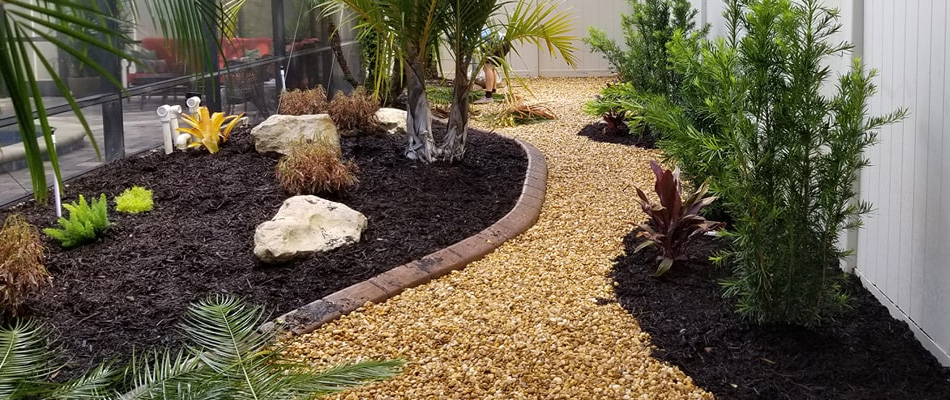The Ultimate Guide To Hilton Head Landscapes
The Ultimate Guide To Hilton Head Landscapes
Blog Article
Everything about Hilton Head Landscapes
Table of ContentsA Biased View of Hilton Head LandscapesFacts About Hilton Head Landscapes UncoveredThe Basic Principles Of Hilton Head Landscapes The Single Strategy To Use For Hilton Head LandscapesThe Ultimate Guide To Hilton Head LandscapesHilton Head Landscapes Fundamentals ExplainedSee This Report on Hilton Head Landscapes
Line develops all types and patterns and can be used in a variety of methods the landscape. Line in the landscape is produced by the edge in between 2 materials, the overview or silhouette of a kind, or a long linear attribute. Lines are an effective device for the developer due to the fact that they can be utilized to create a boundless range of shapes and types, and they control activity of the eye and the body.

Lines in the landscape. The properties of lines figure out just how people react to the landscape, both emotionally and literally.
Some Known Questions About Hilton Head Landscapes.
Straight lines are usually discovered in hardscape sides and material. Rounded lines create a casual, all-natural, unwinded personality that is linked more with nature and asymmetrical equilibrium. Rounded lines relocate the eye at a slower rate and include mystery to the area by developing hidden sights. Vertical lines move the eye up, making a room really feel bigger.
Vertical lines in the landscape include tall, slim plant product, such as trees, or high frameworks, such as an arbor or a bird home on a post. Straight lines move the eye along the ground plane and can make a space feel larger. Reduced lines are extra subdued and create a feeling of rest or repose.
Hilton Head Landscapes - An Overview
Reduced lines are created by reduced garden wall surfaces, sidewalks, and brief bushes. Lines are used to attract types on a strategy. In strategy view, they specify plant beds and hardscape areas. Lines are also produced by the vertical types of constructed functions and plant material. There are 3 main line kinds that produce form in the landscape: bedlines, hardscape lines, and plant lines.
Bedlines connect plant material to the home and hardscape because the eye adheres to the line, moving the stare via the landscape. Hardscape lines are developed by the edge of the hardscape, which marks the developed structure. Line can also be produced by lengthy and narrow products, such as a fencing or wall.
The smart Trick of Hilton Head Landscapes That Nobody is Talking About
Kind is found in both hardscape and plants, and it is commonly the dominant visual aspect that spatially organizes the landscape and commonly establishes the style of the yard. The type of structures, plant beds, and garden accessories also identifies the general kind style of the yard. Official, geometric forms consist of circles, squares, and polygons.
Plants produce kind in the garden through their describes or silhouettes, yet form can also be specified by a gap or adverse room between plants - hilton head landscapers (https://www.tumblr.com/h1tnhdlndscps/754928253939187712/family-owned-and-operated-hilton-head-landscapes?source=share). Circles can be complete circles, or they can be split into fifty percent circles or circle segments and imp source incorporated with lines to produce arcs and tangents
The smart Trick of Hilton Head Landscapes That Nobody is Discussing
Circles are a solid style kind because the eye is always attracted to the center, which can be utilized to highlight a focal factor or connect various other forms. Circular forms in hardscape and yard panels.
The square type can also be segmented and pre-owned consistently to develop a grid pattern. Unlike circles, squares are stronger on the edges, which can be lined up or overlapped to develop distinct patterns and even more complex forms. Polygons are many-sided types with straight edges. Triangulars, as an example, are three-sided polygons.
Twisting lines often simulate the natural training course of rivers or streams and can be referred to as smooth lines with deeply rounded wavinesses. Meandering lines (Figure 3) function well for pathways, plant bedlines, and completely dry stream beds. Meandering lines can include passion and mystery to a yard by leading customers around corners to discover new views and spaces.
Unknown Facts About Hilton Head Landscapes

Figure 5. Fragmented edges: stepping stones in pathway. Kind is one of the most enduring top quality of a plant (Landscaping bluffton sc). https://penzu.com/p/89c630f877ca924e. Usual plant types are well developed and standardized, as form is the most constant and well-known feature of plants. Kind can additionally be created via the massing of plants, where the total mass creates a various type than a specific plant.
A highly different type has to be utilized with careone or more job well as a focal point, but also several produce disorder. Natural plant types, as opposed to over-trimmed types, must establish the mass of the make-up. The significance of overall kind is essentially reliant on the seeing perspectivethe type of a tree can show up rather different to an individual standing under the cover versus viewing the tree from a range in an open area.
Our Hilton Head Landscapes Ideas
Plant types additionally produce and define deep space or open rooms in between the plants, producing either convex or scooped kinds in the spaces. High-arching tree branches typically develop a concave open area under the branches, and a round cover with reduced branches loads the space to develop a convex type outdoors space under the tree.

Report this page